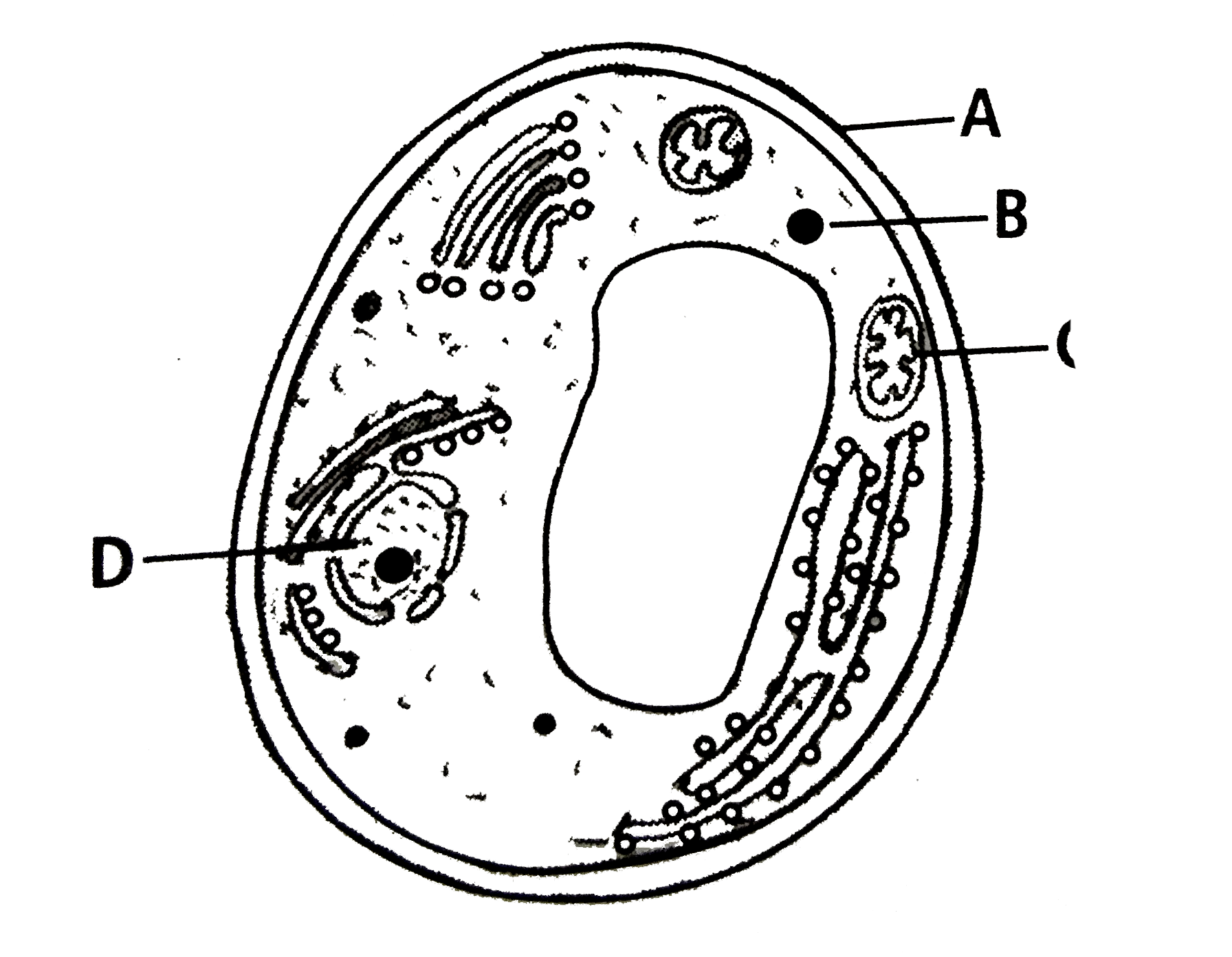________ are the microbodies, which take part in glyoxylate pathway, bounded by a single membrane and are usually present in germinating fatty seeds.
Glyoxyomes
Peroxisomes
Sphaerosomes
Lysosmes
The correct Answer is:A
Step-by-Step Solution:
1. Identify the Microbodies: The question asks for microbodies involved in the glyoxylate pathway that are bounded by a single membrane and found in germinating fatty seeds.
2. Understand the Glyoxylate Pathway: The glyoxylate pathway is a metabolic pathway that allows plants to convert fatty acids into carbohydrates, which is crucial during seed germination when energy is needed for growth.
3. Recognize the Type of Microbodies: The microbodies that participate in the glyoxylate pathway are known as glyoxysomes. These are specialized types of peroxisomes that contain the necessary enzymes for this pathway.
4. Location of Glyoxysomes: Glyoxysomes are predominantly found in the germinating endosperm of oil seeds, where they play a vital role in breaking down stored fats into usable energy.
5. Conclusion: Based on the information gathered, the answer to the question is glyoxysomes.
Final Answer: Glyoxysomes are the microbodies that take part in the glyoxylate pathway, bounded by a single membrane and usually present in germinating fatty seeds.
---
Topper's Solved these Questions
- BOOK - NCERT FINGERTPS ENGLISHCHAPTER - CELL - THE UNIT OF LIFEEXERCISE - HOTS5videos
CELL - THE UNIT OF LIFE
- BOOK - NCERT FINGERTPS ENGLISHCHAPTER - CELL - THE UNIT OF LIFEEXERCISE - NCERT14videos
CELL - THE UNIT OF LIFE
- BOOK - NCERT FINGERTPS ENGLISHCHAPTER - BREATHING AND EXCHANGE OF GASESEXERCISE - Breathing And Exchange Of Gases140videos
BREATHING AND EXCHANGE OF GASES
- BOOK - NCERT FINGERTPS ENGLISHCHAPTER - CELL CYCLE AND CELL DIVISIONEXERCISE - Cell Cycle And Cell Division130videos
CELL CYCLE AND CELL DIVISION
Similar Questions
Knowledge Check
- Question 1 - Select One
Two important processes in a cell, which take place outside the membrane bound organelles, are :
Aenzyme synthesis and DNA replicationBnucleotide synthesis and mutationCfatty acid synthesis and spindle assemblyDglycolysis and photophosphorylation - Question 2 - Select One
The diagram shows the structure of a fungal cell with different parts labelled as A,B,C and D. Which of the following statements are true with regard to the fungal cell structive?

(i) A contains mucopolysaccharides which are also present in exoskeleton of insects and crustaceans.
(ii) D are usually more than one in number in case of aseptate hyphae.
(iii) Carotenes and xanthophylls are present in C, which harvest light energy for photosynthesis.
(iv) B is the reverse food material, usually stored in the form of starch and oil.Ai and iiBiii and ivCi,ii and ivDii,iii and iv - Question 3 - Select One
Read the following statements and select the correct ones.
(i) Conidia are the asexual propagules restricted to Kingdom Fungi.
(ii) Apiece of potato tuber having at least one eye (or node) is capable of giving rise to a new plant.
(iii) Ginger propagates vegetatively with the help of its underground roots.
(iv) Fleshy buds which take part in vegetative propagation are called bulbilsm present in Dioscorea, Agave, etc.A(i) and (iii)B(i) and (iv)C(i),(ii) and (iv)D(i), (ii) and (iii)
Eukaryotic cells have organelles which may
(a) not be bound by a membrane
(b) bound by a single membrane
(c) bound by a double membraneView SolutionCarbohydrates which present in the cell membrane take part in :-
View SolutionWhich of the following cellular organelles is / are bound by a single membrane?
Peroxisomes, Lysosomes, MitochondriaView SolutionIn which part of embryo maximum growth takes place in hypogeal germination :-
View SolutionDuring germination, microphyle of seed takes part in
View Solution

